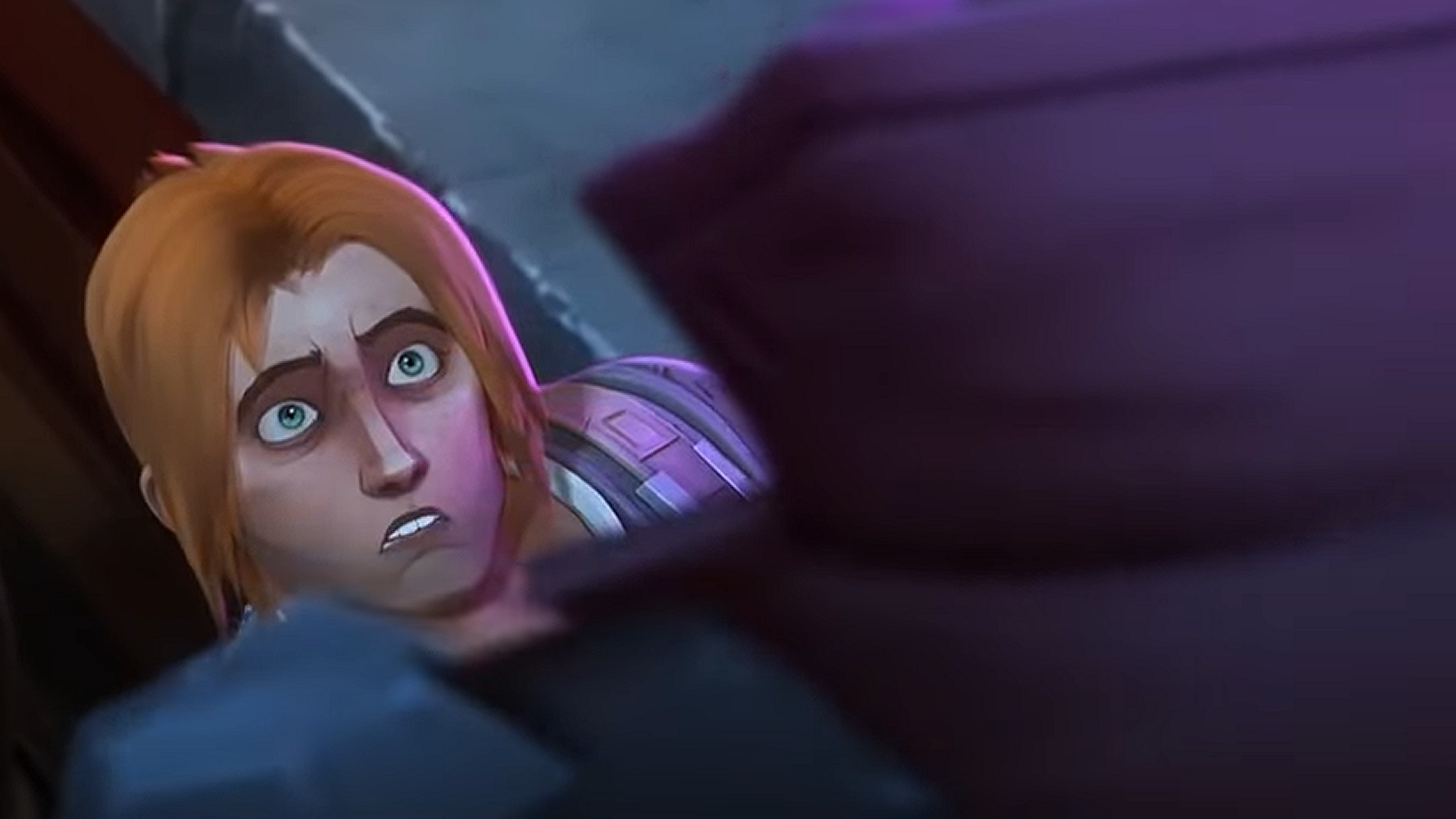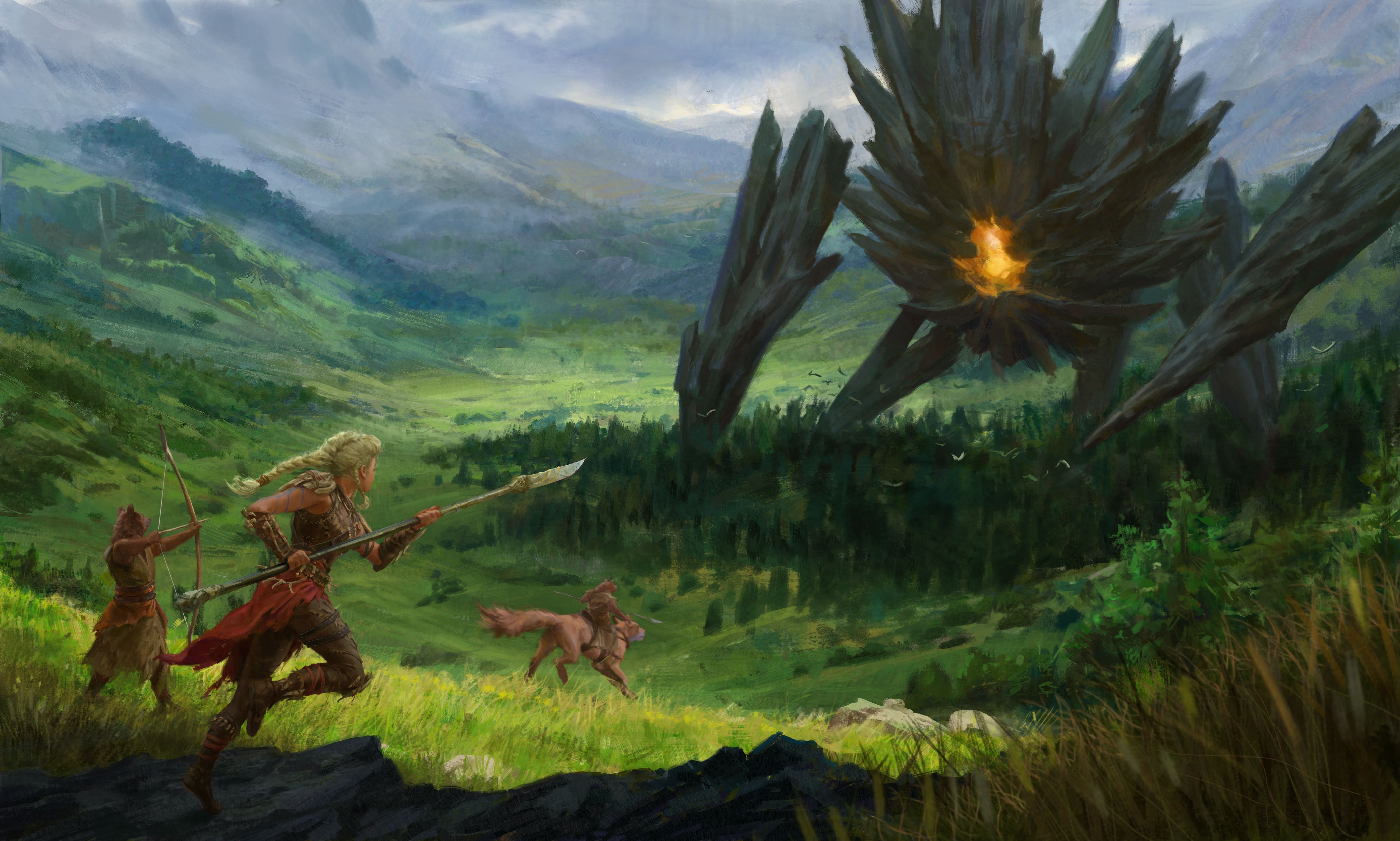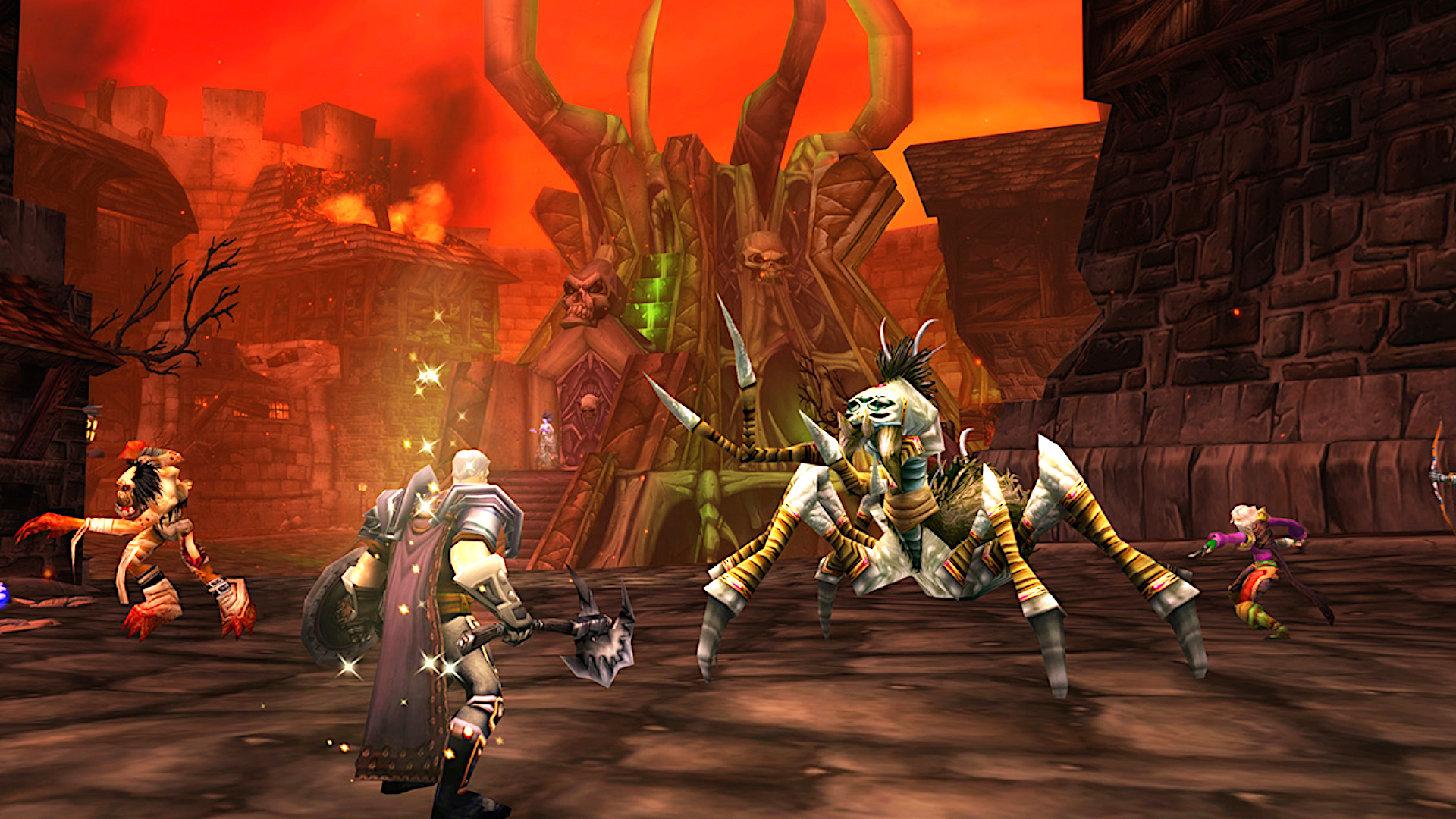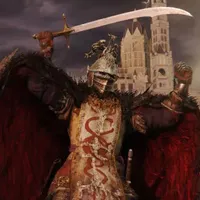MMO players just don't want a rigid casual/hardcore divide anymore—and all the big games know it
Goodbye cliff—hello, slope.

This is Terminally Online: PC Gamer's very own MMORPG column. Every other week, I'll be sharing my thoughts on the genre, interviewing fellow MMO-heads like me, taking a deep-dive into mechanics we've all taken for granted, and, occasionally, bringing in guest writers to talk about their MMO of choice.
My credentials? Well, I've had the fortune—or misfortune, if you will—to've been playing MMOs for most of my life, and I will be playing them until they no longer exist or until I am dead. In other words? I'm Terminally Online.
I've noticed a recent trend—I say recent, more a slow slide taking place over the past decade—of MMORPGs doing away with the casual/hardcore split. See, in the olden days, there were the tryhards and the try-nots. The elite and the n00bs. The sweats and the… dry people. I'm not sure what the opposite of a sweat is.
MMOs have classically been large, open worlds that you could futz around forever in. But if you wanted to see every inch of them, you had to work. Reputation grinds, gruelling gear requirements, punishing death mechanics, and the biggest challenge of all: Getting 40 people to agree to show up to something.
A "hardcore" player lies at the centre of a Venn diagram between difficulty, organisation, and time investment. Thus, it was decreed for many years that anyone without all three would never reach the dizzying height of being 'good at videogame', a pauper, ragged, dressed in mere greens and blues. Bedazzled in epics, the upper crust would guffaw and laugh.
Coming out of a recent World of Warcraft: Midnight summit, experiencing Final Fantasy 14's latest foibles first-hand, and enjoying one of my rare pilgrimages to see if Guild Wars 2 will finally get me, something sank in: All of the big boys are moving away from that divide. As a matter of fact, they have been for years.
And to be clear, when I say hardcore, I don't just mean difficult—it's an overlap of difficulty, time investment, and organisation. We're talking 40-man raids, attunement questlines, and encounters tough enough (especially on dial-up internet) to make you scream "more DoTs!" until your throat is raw.
No more DoTs
Between the 2010s and the 2020s, the public taste for that old-school difficulty cliff soured, turned bitter, rotted, and fell out of our collective mouths. The first death knell of this long-standing tradition, in my mind, is the collapse of Wildstar—an MMORPG I really liked that completely and utterly crumpled under its own ambitions to bring old-school raiding back.

Oh sure, there were problems behind the scenes, but it was also trying to ape past games to its active detriment: 40-man raids, lengthy attunements you had to make sure all 40 people did, the works. To quote a dev video from the studio itself: "You might wanna check out our raids, we dare you." Well, turns out they probably ought to've double-dared folks, because basically no one did. By the time 2018 rolled around, it was curtains for ol' Wildstar.
Keep up to date with the most important stories and the best deals, as picked by the PC Gamer team.
Digging into Guild Wars 2, I was surprised to find a five-year gap between its raid releases. As PCG's resident GW2 expert Phil Savage put it last year, "ArenaNet shifted to strike missions as the de facto endgame for 10-player squads. Strike missions are more LFG-friendly—each is a standalone, raid-like boss—but players have been wanting a return to the more intricate design of the game's raid wings for some time." I don't doubt they were, but there's a reason the move-away happened in the first place.
World of Warcraft: Shadowlands is maybe the biggest-profile example of this design philosophy meeting rancor. WoW's much-maligned expansion, a tipping point that literally caused an exodus, came about because of strict systems that kept you shackled to heavy, punishing timesinks. At the start of the expansion, one of those timesinks could even be 'you picked the wrong covenant, idiot, make an alt and start over'. I mercifully wasn't playing at the time, but I hear some terrible things about Torghast—and the mandatory chore treadmill as a whole.
And then there's Final Fantasy 14, which has learnt this lesson as recently as this year. Occult Crescent's Forked Tower gets described (myself included) as a piece of raid content for no one.
Granted, it was uniquely confusing. It was a raid that could fit 40 players inside, which needed a special resource to begin a lottery to get inside. Once there, a single screw-up could wipe the whole group, and boot you out until the next Forked Tower popped. And for some baffling reason, you couldn't even get a dedicated group together for it.
Some old guards might want to believe that the good ol' days are just a few brave developers away from returning, but I'm not convinced any of us really want that. Granted, there's a niche—World of Warcraft: Classic is popular for a reason—but you just can't support an entire MMO atop time-eating, hardcore/casual design. And these developers know it.
Past hardcore
Guild Wars 2 has, as mentioned, brought its harder raids back—but that's only after spending many years becoming "horizontal progression: the game". There's difficult content, certainly, but it's not a mandate—rather, it's an optional plate of ghost peppers at a buffet. Out of all the MMOs I've mentioned, GW2 is the most absent of a traditional grind, and can be enjoyed just fine by futzing around and doing achievements.

When it comes to Final Fantasy 14, Director Naoki Yoshida has gone on record as saying that a choose-your-own difficulty structure is going to be the direction going forward, starting with the new deep dungeon, Pilgrim's Traverse—no longer will things be designed for either hardcore raiders or casual players, it's all gradients from here on out, baby.
World of Warcraft has similarly really been hitting this design philosophy hard—you could make the argument it was the first to start doing it when Mythic dungeons were introduced back in Warlords of Draenor or the 'Raid Finder' in Cataclysm. Still, starting with Dragonflight and now The War Within, we've had a huge uptick in types of content with varying degrees of difficulty, time investment, and organisation.
Where there once was a ravine between Casual City and the hardcore hall of Valhalla, there's now a series of bridges, gift-shops, and rides."
On the zero-time investment/organisation/difficulty end of the spectrum, we have Story Mode raids—which let you see an entire raid tier on your own. You've got Delves, which can be solo'd at a difficulty of your choosing, and with Midnight, we'll be getting Prey—allowing players to add a dash of danger to the open world, inviting some potentially very challenging ambushes into their lives without hopping into a single Discord server.
Where there once was a ravine between Casual City and the hardcore hall of Valhalla, there's now a series of bridges, gift-shops, and rides.
MMOs are increasingly casting a wider and wider net to make sure all types of players have something to chew on—for instance, difficulties that serve masochists like me, who enjoy hard games but don't have a surplus of free time.
Whether you personally like it or not, it's clear which way the wind's been blowing—and we're finally at the point where even the big boys are throwing their hands up and going 'you know what, this ravine thing's just not a good idea anymore'. And you know what? Good.
Moving on
I'll always be a little sad at the passing of that old-school MMO feeling, but I will otherwise celebrate the bridges built between House Hardcore and House Casual. Because none of us are getting any younger. No, literally.

A 2022 report by Google Play found that most MMO players are between the ages of 25 and 44—59%, compared to just 30% of players who are between the ages of 18 and 24. In other words, if you're playing an MMORPG, people with bills, jobs, and potentially kids outnumber the youngsters nearly two to one. More than that, if we take into account the 11% of even older players in that study.
That's not to say we're all geriatric, but it's clear—as the study states—that the bulk of MMO players today are the ones who played them growing up. Meanwhile, the newer generation is all about live services and, I dunno, Roblox or something.
For those of us who stuck around, a game that demands a lot of our time, is extremely difficult, and requires coordinating with 40 other adults, just isn't goddamn feasible anymore. We can pick one or two of those things, but not all. For me, I like a bit of a challenge, but I get my social gaming fix from TTRPGs—and I have to do chores and, like, at least pretend I've got a social life.
But I think there are more reasons why this is an innate good, other than the shoe fitting the collective MMO audience's foot.

For one, variable difficulties and lower time investments can loop in players who otherwise wouldn't give those challenges a chance. I have a friend who was petrified of Savage Raiding in FF14, but after playing through Bozja's duels (challenging 1v1 fights that Square Enix didn't put in the Occult Crescent, for some reason), were snapped up by a raid group and went on to clear a whole tier. Similarly, I'd be shocked if there weren't at least a few WoW players who gave Mythic+ a try with some friends after climbing the difficulty ranks in Delves.
More than that, I also think that it's healthier if we aren't all tied to one MMO, anyway. While a "forever game" might've been appealing back when my library was small and I was just looking for something to hop onto after school, as I've grown older (statistically-speaking, so have most of you), I've wanted to play more than one videogame for the rest of my life. Shocker, I know.
Ditching the hardcore also means that these games, generally speaking, also have a smaller barrier for entry. There might be a bit of a gear grind, but having different kinds of challenges for all sorts of players means that punishment-loving nomads like myself can game-hop and still find something to gnaw on.
I cannot think of a world in which going back to those good old days makes anybody happier. There were advantages, sure. It was cool to look at raiders as mythological figures, and if you were one of the best, it must've been gratifying. But from an actual enjoyment perspective, divorced from ego and nostalgia both? I think it's a change for the better.
Best MMOs: Most massive
Best strategy games: Number crunching
Best open world games: Unlimited exploration
Best survival games: Live craft love
Best horror games: Fight or flight

Harvey's history with games started when he first begged his parents for a World of Warcraft subscription aged 12, though he's since been cursed with Final Fantasy 14-brain and a huge crush on G'raha Tia. He made his start as a freelancer, writing for websites like Techradar, The Escapist, Dicebreaker, The Gamer, Into the Spine—and of course, PC Gamer. He'll sink his teeth into anything that looks interesting, though he has a soft spot for RPGs, soulslikes, roguelikes, deckbuilders, MMOs, and weird indie titles. He also plays a shelf load of TTRPGs in his offline time. Don't ask him what his favourite system is, he has too many.
You must confirm your public display name before commenting
Please logout and then login again, you will then be prompted to enter your display name.


